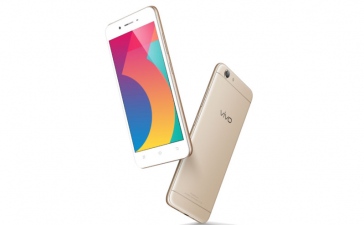Mobile app design plays a major role in the UI and UX of the mobile app. Without any doubt, the most important aspect of the app design is its functionality followed by colour. For engaging customers, the app needs to be user-friendly and simple, but the hue, chroma, and brightness of the colours used in app design should also be in the right proportion. The use of bright colours not only makes your app colourful and attractive but also aids in the interpretation of the content of your app, user interaction with the correct elements, and understanding of the actions. Every app needs to choose some primary colours for use in its main areas by developing a colour scheme. Thus, the colours for different segments of your mobile app such as the logo, icon, primary colours, and the colour scheme, need to be selected very carefully.
The implications of different colours
While it is a great idea to follow the latest app design trends while choosing the colours for your app, you should know that each colour has its impact and communicates with the user in a particular way. Here are the examples of a few major colours and the meaning conveyed by them.
- Red: It is generally used in places where an impulsive action is needed, such as the call to action.
- Green: It is related more to nature and environment and is linked with money and wealth.
- Yellow: It is associated more with delight and optimism.
- Orange: It depicts exhilaration, fervour, optimism, and hope.
- White: It symbolises purity.
- Blue: It is a dynamic colour that is associated with prosperity and tranquillity.
- Black: It is added to give a soothing effect to eyes.
Selecting the colour for the app icon
Different apps have icons of different colours. When you visit the Apple App Store or Google Play Store, you see many app icons having a plethora of colours. These colours are generally chosen based on the type of app it is. For example, an app related to the environment is more likely to have a green coloured icon. You need select the colour very cautiously by applying your knowledge and understanding of the colours and their implications. You can follow the current design trends and choose rampant colours like red, green, or blue as used by many apps. However, if you want your app icon to look different, you can use the various shades of any of these colours.
Choosing the right colour scheme
Deciding the colour scheme for a new app that will work well is not an easy task as there is an infinite number of colour combinations available. Multiple colour combinations should not be used randomly, and you should avoid using unrelated or unwanted colours as they may destroy your app. Also, the readability of the content should be maintained. For this, you can either choose the traditional colour scheme patterns (like monochromatic, analogous, complementary) or customize the colour combinations without making any single pattern as the base. The colour scheme you use or create is very much dependent on the brand colours and colour associations for your region. The designers can also use a colour wheel that contains several predefined schemes to make the task easier. You also need to use colours and contrast that support the usability of the app.
The traditional colour schemes available
- Monochromatic: As each colour is taken from the same base colour, monochromatic colour schemes are the simplest colour schemes used for designing apps. Different shades, tones, and tints of a single colour produce a soothing effect with clean and elegant innovative designs. The blue and green hues are highly easy on the eyes.
- Analogous: Either closely related colours or one dominant colour with other colours enriching the scheme are used in the analogous colour scheme. You need to decide the vibrancy of the colours to be used. Mainly three hues of associated colours are used. Based on the theme, you need to give a sophisticated look to your app using colours. For example, a meditation app, Calm, makes use of the analogous green and blue colours to make the users feel tranquil and peaceful. Another gesture-driven to-do app, Clear, makes use of analogous colours to prioritize the current tasks visually.
- Complementary: Opposite colours that contrast strongly are used in the complementary scheme to gain user attention. So, a dominant colour is chosen, and then a contrasting colour is used to highlight what needs to stand out. However, care must be taken to ensure that the colours do not look very bright.
Customized colour scheme
You can also create a customized colour scheme of your choice by using the colour wheel intelligently. It is not very complicated, and you need to add a bright accent colour to a neutral palette to make the scheme visually striking.
Compound colour scheme
A compound colour scheme combines the base colour with a couple of analogous colours and is also known as the split-complementary scheme.
Picking the colour shades
While the colours chosen should be simple and pleasing to the eyes, the readability of the content should not be compromised. Thus, the colour shade of the app needs to be chosen such that it makes the mobile app design more attractive and highlights certain specific areas of the app such as its functionality. Adobe Colour CC simplifies the task of colour selection by designers as they can choose any colour as the base colour and add and save the palettes directly.
Role of colour contrast
The colour contrast should be such that it embellishes the design but maintains the readability of the text content. So, two colours with low-value contrast should be avoided. However, to make the design eye-catching for users, you can use the high-value contrast colour for highlighting important areas or texts. You can use it in call-to-action buttons that are frequently used by users.
Consider colour blindness while designing
Colour blind people cannot differentiate between base colours such as red, blue or green. So, one should use elements like strokes, signs, indicators, patterns, texture, or text to designate actions and content.
Winding up
The right choice of colours, their combinations, shades, contrasts, and colour schemes, can determine the success of the mobile app. Thus, while designing the UI and UX of the mobile app, a mobile app development company needs to keep the importance of colour in mind and choose the colours with extreme care. The correct use of colour schemes and contrasts can enrich the app design and make it successful.
Author bio
Juned Ghanchi is the chief marketing officer for IndianAppDevelopers, a provider of mobile app development solutions. He has ten years of experience in industries including Software, Cloud, IOT and Blockchain.







